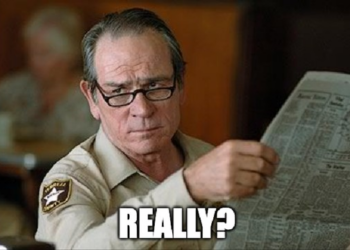Dr Sarah Ingham is the author of The Military Covenant: its impact on civil-military relations in Britain.
The fidget spinner. The ice-bucket challenge. Game of Thrones. Pokémon Go… Of all the short-lived manias that have gripped Britain, few have been as polarising and corrosive as trans; the sheer hatred of women that many of its noisiest supporters display, the intellectual dishonesty, the brainwashing, not to mention the mutilation of children.
So the Supreme Court’s unanimous verdict that, in the context of the 2010 Equality Act, “woman” means “biological woman” was, coming just ahead of Good Friday, very timely indeed.
At Wednesday’s PMQs, Sir Keir Starmer once again welcomed “the clarity” brought about by last week’s Supreme Court ruling. As a scornful Kemi Badenoch observed, Starmer has lacked the balls to challenge the Orwellian 2+2=5 “trans women are women” narrative.
Like “Calais” engraved on Queen Mary Tudor’s heart, hopefully his repeated fails of Key Stage 1 biology will haunt him. Deniers of biological reality for so long, the Prime Minister and the rest of the misogynist pack – dubbed “transmaids” by writer Julie Burchill – have repeatedly betrayed women.
But in yet another unwitting homage to Orwell’s 1984, according to No 10’s official spokesman Starmer suddenly “does not believe transgender women are women.”
Inevitably, Labour MPs jump aboard every passing progressive bandwagon. What’s the Conservatives’ excuse?
In 2016, the Commons’ Women and Equalities Committee produced the Transgender Equality report. It states: “Before commencing the inquiry, we consulted informally with representatives of two key stakeholder organisations, Press for Change and Stonewall.” Not spelt out was that trans’ champion Press for Change’s co-founder was specialist advisor to the Committee.
Today, Stonewall’s behind-the-scenes involvement also raises questions. The charity has become increasingly controversial. On his website, the politically astute Health Secretary Wes Streeting avoids mentioning he ever worked for them.
Back in 2016, the Committee certainly talked up the trans issue. Why? Who was setting the agenda? With no evidence whatsoever, it asserted there could be 650,000 people “likely to be gender incongruent”.
In the 2021 Census, 262,000 people aged 16+ affirmed that their gender identity was different from their sex registered at birth. Last year, the Office for National Statistics admitted even this comparatively paltry number was worthless and should be revised downwards, not least because closer crunching found that Tower Hamlets reported more trans folk than Brighton.
Transgender Equality touched on all the trans issues which would prove so contentious over the next decade, including trans women’s (i.e. men’s) access to women’s refuges, hospital wards, prisons and sport.
Given that the impact on women was brushed aside, the Women’s and Equality Committee was grossly misnamed. It implied women should always come second to men who identify as women. Naïvely, it did not occur to them that male rapists like “Karen White” would game the system to be sent to a women’s prison. Instead, “caring for” trans people in jail was “crucial”.
The Committee took evidence about children’s gender dysphoria. It went along with the fiction that both puberty blockers and cross-sex hormones were physically cost-free options for adolescents. A star witness was Susie Green, boss of the controversial charity Mermaids. It later emerged that she took her 16-year-old son to Thailand to be castrated. (Or “gender-reassigned”, in trans-speak)
Around 2018/9 trans suddenly was everywhere, but supporters refused to consider social contagion had taken hold. Like the short-lived fad for veganism, trans was a craze – but a malign one.
Troubled young people like detransitioner Keira Bell were offered by surgeons, doctors and therapists the hope that changing sex was not only possible, but would solve their problems. Why were so many teenaged girls with autism presenting as trans? Trans fans couldn’t have cared less.
They just wanted converts to the cult. The snowball effect led to public sector institutions and private companies eager to virtue signal their “allyship”. Halifax told customers to go elsewhere if they objected to pronouns on name badges.
Meanwhile, women who dared question the trans orthodoxy were being sacked (Maya Forstater), hounded out of their jobs (Kathleen Stock) or physically attacked (Kellie-Jay Keen).
“Trans women are women.” This magical thinking, identical to believing in unicorns, was adopted by too many who should know better. Perhaps they think that Justin Trudeau in blackface makes him black. Trans supporters are usually in denial about the straight men’s fetish for auto-gynephilia, a major reason why women don’t want pretend women anywhere near their safe public spaces.
Last week, For Women Scotland went to the Supreme Court and won. The case shames Britain’s politicians, who outsourced decisions to the non-elected judiciary.
Badenoch rightly highlights her work as Equalities Minister in protecting women, while Rishi Sunak deserves credit for blocking gender recognition legislation in Scotland. But the ambiguities in the Equality Act should have been dealt with long ago.
Meanwhile, nurse Sandie Peggie continues her employment tribunal case against NHS Fife while eight other nurses are taking legal action against Darlington Memorial Hospital. Both cases concern men using their changing rooms.
Last weekend, militant trans supporters demonstrated against the Supreme Court verdict. Placards called for JK Rowling to be burned alive and women to be murdered. In Parliament Square the statue of suffragist Millicent Fawcett was defaced.
The male aggression and misogyny on display undermines the trans cause. It hurts those men who have chosen to live in the opposite sex who surely, like most of us, just want to get on with their lives.


![NYC Tourist Helicopter Falls into Hudson River, Siemens Executive and Family Among Those Killed [WATCH]](https://www.right2024.com/wp-content/uploads/2025/04/NYC-Tourist-Helicopter-Falls-into-Hudson-River-Siemens-Executive-and-350x250.jpg)






![Red Sox Fan Makes the ‘Catch of the Day’ with Unconventional ‘Glove’ [WATCH]](https://www.right2024.com/wp-content/uploads/2025/04/Red-Sox-Fan-Makes-the-‘Catch-of-the-Day-with-350x250.jpg)
![Green Day’s Cringe Trump Diss Ends in Fire and Evacuation [WATCH]](https://www.right2024.com/wp-content/uploads/2025/04/Green-Days-Cringe-Trump-Diss-Ends-in-Fire-and-Evacuation-350x250.jpg)






